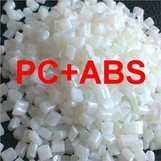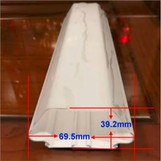As a seasoned supplier of T8 Fixture Housing, I've encountered numerous inquiries from customers regarding the ease of disassembling these fixtures. In this blog post, I'll delve into the intricacies of T8 Fixture Housing disassembly, exploring the factors that influence it and providing insights based on my extensive experience in the industry.
Understanding T8 Fixture Housing
Before we discuss the disassembly process, let's first understand what T8 Fixture Housing is. T8 Fixture Housing refers to the enclosures that house T8 fluorescent lamps. These housings are typically made from various materials, including plastic and metal, and are designed to protect the lamp, provide structural support, and distribute light effectively. T8 Fixture Housing comes in different shapes and sizes to accommodate various applications, from residential lighting to commercial and industrial settings.
Factors Affecting Disassembly
Several factors can influence the ease of disassembling T8 Fixture Housing. Understanding these factors can help you determine whether a particular fixture will be easy to take apart when the need arises.
1. Design and Construction
The design and construction of the T8 Fixture Housing play a significant role in its disassembly. Some fixtures are designed with user-friendly features, such as snap-fit connections or removable panels, which make disassembly quick and straightforward. On the other hand, fixtures with complex designs or intricate locking mechanisms may require more time and effort to disassemble.
For example, some T8 Fixture Housing may have a simple two-piece design, where the top and bottom sections are held together by a few screws or clips. These fixtures can be easily disassembled by removing the screws or releasing the clips. In contrast, fixtures with multiple components or hidden fasteners may require more advanced tools and techniques to disassemble.
2. Material Selection
The material used to manufacture the T8 Fixture Housing can also affect its disassembly. Plastic housings are generally easier to disassemble than metal housings because they are lighter and more flexible. Plastic fixtures often use snap-fit connections or adhesive tapes, which can be easily separated without the need for special tools.
Metal housings, on the other hand, may require more force and specialized tools to disassemble. Metal fixtures are typically held together by screws, bolts, or rivets, which may need to be removed using a screwdriver, wrench, or drill. Additionally, metal housings may have sharp edges or corners, which can pose a safety hazard during disassembly.
3. Age and Condition
The age and condition of the T8 Fixture Housing can also impact its disassembly. Over time, fixtures may become worn or damaged, making them more difficult to disassemble. For example, screws may become stripped or rusted, making them difficult to remove. Adhesive tapes may lose their stickiness, causing the components to come apart more easily.
In addition, fixtures that have been exposed to harsh environmental conditions, such as extreme temperatures or moisture, may be more prone to damage and may require more effort to disassemble. It's important to inspect the fixture carefully before attempting to disassemble it to identify any potential issues.
Disassembly Process
Now that we've discussed the factors that affect the ease of disassembling T8 Fixture Housing, let's take a look at the general disassembly process. Keep in mind that the specific steps may vary depending on the design and construction of the fixture.


1. Safety First
Before you begin disassembling the T8 Fixture Housing, it's important to ensure your safety. Turn off the power supply to the fixture to prevent electric shock. If the fixture is installed in a high location, use a sturdy ladder or platform to reach it safely. Wear appropriate safety gear, such as gloves and safety glasses, to protect yourself from sharp edges or flying debris.
2. Remove the Cover
The first step in disassembling the T8 Fixture Housing is to remove the cover. In most cases, the cover is held in place by screws, clips, or snap-fit connections. Use a screwdriver or other appropriate tool to remove the screws or release the clips. If the cover is held in place by snap-fit connections, gently pry it open using a flathead screwdriver or a plastic pry tool.
3. Disconnect the Wiring
Once the cover is removed, you'll need to disconnect the wiring. Carefully identify the wires and their connections, and use a wire stripper or pliers to disconnect them. Be sure to label the wires to ensure proper reconnection later.
4. Remove the Lamp Holder
Next, remove the lamp holder from the housing. The lamp holder is typically held in place by screws or clips. Use a screwdriver or other appropriate tool to remove the screws or release the clips. Once the lamp holder is removed, you can remove the lamp from the holder.
5. Disassemble the Housing
Finally, disassemble the housing into its individual components. Depending on the design of the fixture, this may involve removing additional screws, clips, or snap-fit connections. Use a screwdriver or other appropriate tool to remove the fasteners and separate the components.
Tips for Easy Disassembly
Here are some tips to make the disassembly process easier and more efficient:
- Use the Right Tools: Make sure you have the appropriate tools for the job, such as a screwdriver, pliers, wire stripper, and plastic pry tool. Using the right tools can make the disassembly process quicker and safer.
- Take Your Time: Disassembling a T8 Fixture Housing can be a delicate process, especially if the fixture has complex components or hidden fasteners. Take your time and be patient to avoid damaging the fixture or injuring yourself.
- Keep Track of the Parts: As you disassemble the fixture, keep track of the parts and their locations. You can use a container or a piece of paper to organize the parts and label them for easy reassembly.
- Refer to the Manual: If you're unsure how to disassemble a particular fixture, refer to the manufacturer's manual or instructions. The manual may provide detailed diagrams or step-by-step instructions to help you disassemble the fixture safely and correctly.
Conclusion
In conclusion, the ease of disassembling T8 Fixture Housing depends on several factors, including the design and construction of the fixture, the material selection, and the age and condition of the fixture. While some fixtures may be easy to disassemble, others may require more time and effort. By understanding these factors and following the tips outlined in this blog post, you can make the disassembly process easier and more efficient.
If you're in the market for T8 Fixture Housing, be sure to consider the ease of disassembly when making your decision. Look for fixtures with user-friendly designs and features that make disassembly quick and straightforward. And if you have any questions or need assistance with disassembling your T8 Fixture Housing, don't hesitate to contact us. We're here to help you find the right solution for your lighting needs.
We also offer a wide range of T8 Light Fixture Plastic Cover and T5 Light Fixture Plastic Cover to complement your T8 Fixture Housing. If you're interested in learning more about our products or would like to discuss a potential purchase, please reach out to us. We look forward to working with you.
References
- Lighting Industry Association. (2023). Guide to Lighting Fixture Disassembly.
- Manufacturer's Manuals for T8 Fixture Housing.




